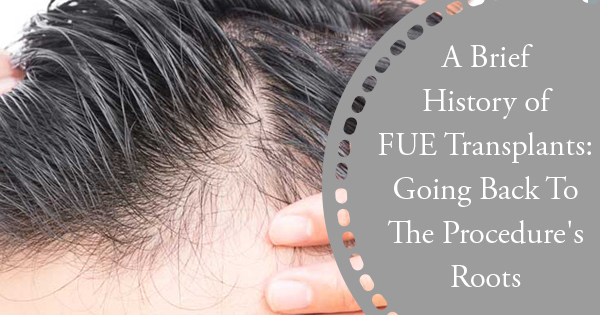A Brief History of FUE Transplants: Going Back To The Procedure’s Roots

One of the most popular hair transplant options worldwide is follicular unit extraction, or FUE. This procedure is usually pursued in cases of androgenetic alopecia, also known as male pattern baldness. A fairly common procedure, FUE transplants have a history dating back to 1920s.
What Is FUE Transplant Surgery?
In this minimally invasive procedure, a hair loss surgeon uses small circular punches to remove individual follicular units from the back of the patient’s scalp. The surgeon then reimplants the harvested units back into the scalp’s balding areas. The implanted grafts take to their new placement in a matter of days and the redness in the area settles in about four to five days. The results are not immediate, but within about a year’s time, a patient will typically see vastly improved hair growth.
A Short History Of FUE Transplants
This procedure was not developed overnight. In Japan, Dr. Shojui Okuda developed the early stages of FUE transplants during the late 1920s and early 1930s when he used one-millimeter punches for surgical hair transplantation. This basic technique wasn’t picked up by anyone else for another 60 years, when Dr. Ray Woods continued the development in Sydney, Australia and became the father of modern FUE. It is not known if Dr. Woods had access to Dr. Okuda’s papers or learned of his work in some other method.
Dr. Woods and his sister, Dr. Angela Campbell, had wanted to break into the field of hair restoration surgery, but did not want to cause the scarring side effects seen in other procedures of the time. They were met with a considerably negative response until Dr. Woods reached out to writer Spencer Kobren in 1999. Kobren had written the best-selling The Bald Truth, and he immediately saw the benefits of FUE. He helped spread the word to the leaders of hair transplant surgery in that era.
By 2002, doctors across North America were trying to develop their own method of FUE transplant. Since then, the procedure has gained steady support. The world’s first surgical hair transplant robot was introduced in 2008, with the goal of gauging efficacy and reliability while delivering a consistency that was on par with a human’s abilities.
The International Society of Hair Restoration Surgeons (ISHRS) polled its nearly 1200 member doctors in 2014, and found that the number of FUE surgeries performed worldwide had nearly equaled the number of worldwide FUSS procedures, a more invasive, but largely dominant transplant procedure. As its popularity spreads, FUE has proven to be safe and effective method of hair transplantation.